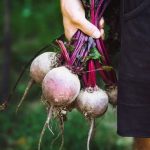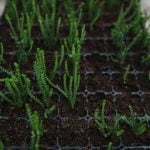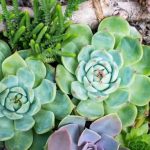One of the most rewarding aspects of creating a beautiful and thriving outdoor space is designing a stunning gardening area. Your gardening area is not only a place to grow fruits, vegetables, and flowers, but it can also be a tranquil retreat and a reflection of your personal style.
In this article, we will explore various gardening area ideas to help you maximize your outdoor space and create a lush, vibrant garden that brings joy and beauty to your home. Whether you have a large backyard or just a small balcony, there are plenty of creative ways to transform your gardening area into a stunning oasis.
Assessing the location of your gardening area is crucial for ensuring its success. We will provide expert tips for determining the best spot for your garden, taking into account factors such as sunlight, soil quality, and accessibility. Once you have identified the perfect location, we will guide you through creative layout ideas to maximize space and create an aesthetically pleasing garden design.
In addition to traditional ground-based gardens, we will also explore innovative container gardening techniques for those with limited space. And for those looking to truly maximize every inch of their outdoor area, we will delve into the world of vertical gardening using walls and trellises. So whether you’re a seasoned gardener or just starting out, this article will equip you with the knowledge and inspiration to create a stunning gardening area that reflects your unique style and personality.
Assessing Your Space
When it comes to creating a gardening area, the location is key. The right spot can make a big difference in the success of your garden. Here are some tips for assessing your space and determining the best location for your gardening area.
1. Evaluate sunlight: One of the most important factors in choosing a location for your gardening area is sunlight. Most vegetables, fruits, and flowers need at least 6 hours of sunlight per day. Take note of how the sun moves across your yard throughout the day to find the sunniest spot for your garden.
2. Consider access to water: Your gardening area should be easily accessible to a water source. Whether you plan on using a hose or watering cans, it’s important that you’re able to water your plants regularly without too much hassle.
3. Check soil quality: Before choosing a location for your garden, it’s important to assess the soil quality. Use a soil testing kit to check for pH levels and nutrient content. You may need to amend the soil with compost or other organic matter to create an optimal growing environment for your plants.
By taking these factors into consideration, you can choose the best location for your gardening area and set yourself up for success as you begin planning and planting. These tips will help you make the most of your available space and create a thriving garden that you can enjoy year-round.keyword: gardening area ideas.
Designing Your Garden
When it comes to designing your garden, maximizing space is key to creating a beautiful and functional gardening area. There are several creative layout ideas that can help you make the most of your available space while also adding visual interest to the overall design.
For example, using raised beds can not only provide better drainage and soil quality but also create defined spaces for different types of plants. Additionally, incorporating pathways between the beds can further organize and enhance the aesthetic appeal of your garden.
Another effective design idea for maximizing space in your gardening area is to utilize vertical structures such as trellises and arbors. These features not only add height and dimension to your garden but also provide support for climbing plants like vines, beans, and tomatoes. By growing vertically, you can take advantage of unused space while adding an element of greenery that enhances the overall beauty of your garden.
Furthermore, integrating multi-functional elements into your garden layout can help maximize space while serving multiple purposes. For instance, a seating area with built-in planters or a water feature surrounded by herbs and flowers are great ways to combine function and aesthetics in a limited gardening area. Thinking outside the box when it comes to layout design can lead to a more visually appealing and productive garden.
| Creative Layout Ideas | Benefits |
|---|---|
| Raised Beds | Better drainage, organized planting areas |
| Vertical Structures | Utilizes unused space, adds dimension |
| Multi-functional Elements | Serves multiple purposes, combines function and aesthetics |
Choosing the Right Plants
When it comes to creating a thriving and beautiful gardening area, choosing the right plants is crucial. The selection of vegetables, fruits, and flowers will depend on various factors such as the climate of your location, the size of your gardening area, and your personal preferences.
If you have limited space in your gardening area, consider planting compact varieties of vegetables and fruits such as patio tomatoes, dwarf blueberries, or bush cucumbers. These smaller plants are perfect for container gardening or small raised beds. Additionally, consider vertical gardening techniques to maximize space by growing climbing vegetables like pole beans and peas.
For those with larger gardening areas, you have more flexibility in choosing a variety of plants. Take into consideration the local climate and soil conditions to ensure that the plants you select will thrive in your specific environment. Researching which types of flowers and plants grow well in your region can help you make informed decisions about what to plant.
The key is to find a balance between selecting plants that are suitable for your gardening area while also reflecting your personal taste and style. By doing so, you can create a vibrant and flourishing garden that brings you joy throughout the year.
| Types of Plants | Recommended Varieties |
|---|---|
| Vegetables | Patio Tomatoes, Bush Cucumbers |
| Fruits | Dwarf Blueberries, Compact Strawberries |
| Flowers | Zinnias, Marigolds |
Container Gardening
Utilizing Vertical Space
When it comes to gardening in small spaces, utilizing vertical space is essential. Hanging planters, wall-mounted planters, and trellises can all be used to maximize the amount of greenery in a limited area. Consider planting climbing plants such as beans, peas, or cucumbers that can grow upwards instead of outwards. This not only saves valuable floor space but also adds a beautiful aesthetic to your gardening area.
Choosing the Right Containers
When selecting containers for your small space garden, be creative and think outside the box. Look for unconventional items that can be repurposed as planters, such as old buckets, wooden crates, or even shoe organizers. Ensure that the containers have drainage holes to prevent waterlogging and choose a lightweight potting mix that will provide good drainage and aeration for your plants.
Mixing and Matching Plants
One of the joys of container gardening is being able to mix and match different plants within one compact area. Consider planting a variety of herbs together in one planter or mixing flowers with vegetables for a colorful and functional display. Be mindful of the growing needs of each plant when pairing them together, ensuring they have similar light, water, and soil requirements.
By thinking creatively and making the most of vertical space, choosing the right containers, and mixing and matching plants effectively, it’s possible to create a lush and vibrant garden in even the smallest of spaces. These container gardening ideas are just a starting point – let your imagination run wild as you transform your small gardening area into a beautiful oasis filled with life and color.
Vertical Gardening
Benefits of Vertical Gardening
Vertical gardening is a great way to make the most of limited gardening area ideas. By utilizing walls, trellises, and other vertical structures, you can create a lush, green space without taking up valuable ground space. This method not only maximizes space but also adds an aesthetic appeal to your garden, creating a visually interesting and dynamic environment.
Choosing the Right Plants for Vertical Gardening
When it comes to vertical gardening, selecting the right plants is crucial. Look for plants that are well-suited to growing vertically, such as climbing fruits and vegetables like tomatoes, cucumbers, and peas. Additionally, consider incorporating vining flowers such as morning glories or climbing roses to add color and fragrance to your vertical garden. In some cases, herbs and other compact plants can also thrive in a vertical environment.
Tips for Creating Your Vertical Garden
There are various ways to create a vertical garden in your gardening area. You can use trellises or lattice panels to support climbing plants, install hanging baskets or wall-mounted planters, or even repurpose items like pallets or gutters as vertical planters. Take into account factors like sunlight exposure and watering needs when planning your vertical garden layout. With proper care and maintenance, your vertical garden can be a beautiful and functional addition to your gardening area.
Maintaining Your Garden
Once you have designed and planted your garden, it’s important to maintain it properly in order to keep it healthy and vibrant. Here are some essential tips for maintaining your gardening area:
1. Regular watering: Make sure to water your plants regularly, especially during the warmer months. Consider installing a drip irrigation system or soaker hoses to ensure that your plants receive consistent moisture.
2. Weeding: Keep on top of any weeds that may sprout in your garden. Weeds compete with your plants for water, nutrients, and sunlight, so regular weeding is essential for the health of your garden.
3. Pruning and deadheading: Trim any dead or overgrown branches from trees and shrubs in your garden. Deadhead flowers by removing faded blooms to encourage new growth and prolong flowering.
4. Fertilizing: Depending on the type of plants in your garden, you may need to fertilize them periodically to ensure they have the nutrients they need to thrive.
5. Pest control: Keep an eye out for any pests that may be damaging your plants and take appropriate measures to control them without harming beneficial insects.
By following these maintenance tips, you can ensure that your gardening area remains healthy, vibrant, and productive throughout the growing season.
Remember that maintaining a garden is an ongoing process and requires consistent effort, but the rewards of a thriving garden make it all worthwhile. With these essential tips for keeping your gardening area healthy and vibrant, you can enjoy a beautiful and bountiful space no matter its size or layout.
Seasonal Gardening
Adapting your gardening area to the changing seasons is essential for maintaining a healthy and vibrant garden year-round. As the weather shifts, so do the needs of your plants, and it’s important to adjust your gardening practices accordingly. One key aspect of seasonal gardening is understanding the specific needs of your plants during each season and taking proactive steps to ensure their continued growth and success.
In the spring, focus on preparing your garden for new growth. This may involve clearing away any debris leftover from winter, amending the soil with compost or fertilizer, and planning out what you want to plant for the upcoming season.
Consider incorporating early-blooming flowers that can add color to your garden as it begins to come back to life. Additionally, be sure to assess any damage that may have been caused by winter weather and make any necessary repairs or replacements.
As summer arrives, it’s important to pay close attention to watering and maintenance. With higher temperatures and increased sunlight, plants may require more frequent watering to stay adequately hydrated. It’s also crucial to monitor for pests and diseases that are more prevalent in warmer months and take proactive measures to protect your garden. Consider adding shade structures or using mulch around plants to help retain moisture in the soil.
In the fall, start thinking about harvesting any remaining fruits or vegetables from your garden before colder weather sets in. You can also take this time to plan for a fall garden by planting cool-weather crops such as lettuce, spinach, and broccoli. Additionally, consider tasks such as pruning back perennials or planting bulbs for spring blooms in preparation for the following year.
Remember that each season presents unique opportunities for showcasing different plant varieties and experimenting with new gardening techniques. By staying attuned to these changes and adapting your gardening area accordingly, you can enjoy a thriving garden throughout the entire year.
Inspirational Examples
In conclusion, creating a beautiful and productive gardening area is not only beneficial for your physical health but also for your mental wellbeing. By incorporating the various tips and ideas mentioned in this article, you can turn any outdoor or indoor space into a flourishing garden that brings joy and tranquility to your life.
Assessing your available space is crucial in determining the best location for your gardening area. Whether you have a small balcony, a backyard, or just a few windowsills, there are countless container gardening and vertical gardening options to maximize your space and make the most of what you have. From hanging planters to trellises, there are innovative ways to create a garden even in the smallest of areas.
When selecting plants for your garden, consider the climate of your region and the specific needs of each plant. Choosing the right vegetables, fruits, and flowers will ensure that your gardening area thrives throughout the year, adapting to the changing seasons with careful planning and maintenance.
By utilizing creative design layouts and seasonal adaptations along with real-life inspirational examples of successful gardening areas, you can bring beauty and vitality to any space. With these ideas in mind, you’re well on your way to creating the perfect gardening area that reflects both your personality and lifestyle.
Frequently Asked Questions
How Do You Design a Garden Area?
Designing a garden area involves careful planning and consideration of factors such as available space, soil type, sunlight exposure, and climate. It also requires choosing the right plants, flowers, and landscaping elements to create a cohesive and visually appealing outdoor space.
How Do You Build a Small Garden Space?
Building a small garden space starts with assessing the available area and determining the layout and design that will maximize its potential. This can involve constructing raised beds or containers, selecting appropriate plants for the space, and incorporating features like pathways or seating areas to enhance the overall look and functionality of the garden.
How Do I Make My Garden Stand Out?
Making your garden stand out can be achieved by adding unique elements such as sculptures, decorative planters, or water features. Using a variety of plant colors and textures can also create visual interest, as well as incorporating outdoor lighting to highlight specific areas during the evening hours.
Additionally, maintaining a well-kept garden through regular grooming and maintenance will ensure it remains an eye-catching focal point in your outdoor space.

Welcome to my gardening blog! I am passionate about plants and enjoy sharing my knowledge and experiences with others. In this blog, I will write about everything related to gardening, from tips on how to get started to updates on my own garden projects.





